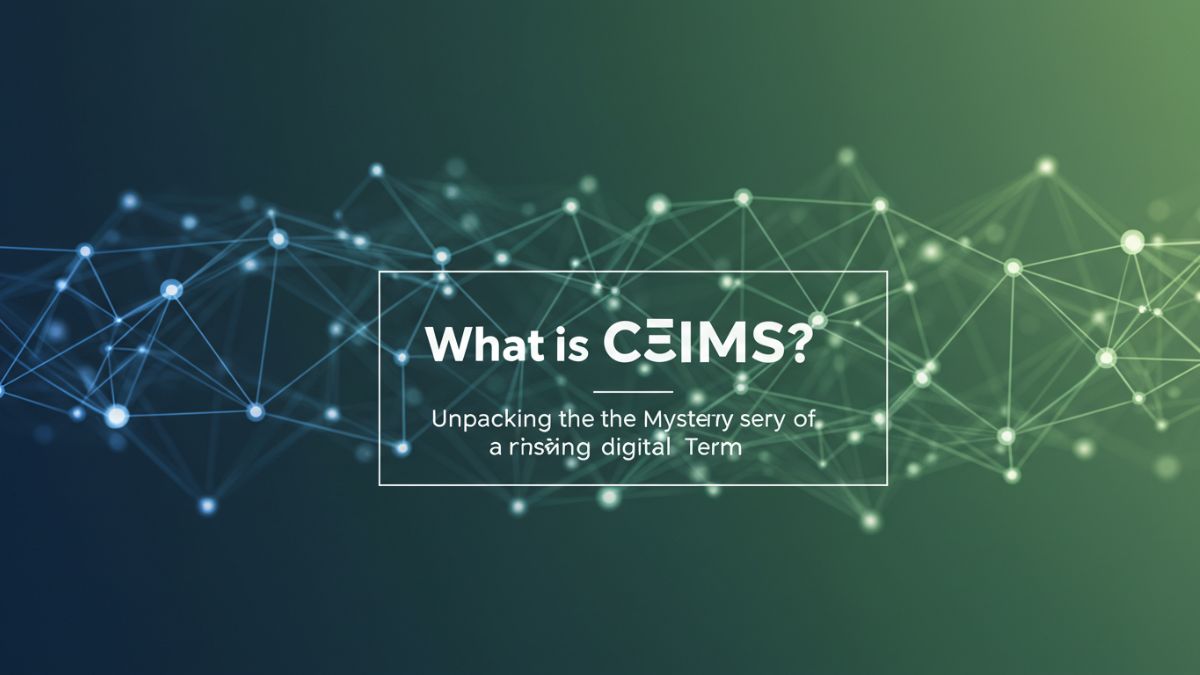GENERAL
The Hidden Costs of Poor Documentation in High-Profile Legal Cases

In the intricate world of legal proceedings, documentation serves as the backbone of justice. Court records, evidence logs, transcripts, and filings form the foundation upon which fair trials and accurate judgments depend. When documentation systems fail, the consequences can be devastating—not only for the parties directly involved but also for the integrity of the legal system itself. This article examines several high-profile cases where documentation failures led to serious consequences, highlighting the often-overlooked importance of meticulous record-keeping in the pursuit of justice.
The Duke Lacrosse Case: When Documentation Becomes Manipulation
In 2006, members of Duke University’s lacrosse team faced serious sexual assault allegations that captivated national attention. What eventually emerged was a sobering example of how documentation mishandling can nearly destroy lives. Prosecutor Mike Nifong was later disbarred for, among other ethical violations, deliberately withholding exculpatory DNA evidence documentation that would have cleared the accused players much earlier.
The hidden costs in this case were enormous: three young men’s reputations were severely damaged, the accuser’s credibility was irreparably harmed, and public trust in the legal system was significantly eroded. The financial toll included millions in legal fees, settlements paid by Duke University, and the incalculable cost of careers and opportunities derailed by the false accusations. Proper documentation protocols, independently verified, could have prevented this miscarriage of justice from proceeding as far as it did.
Enron: When Document Destruction Destroys More Than Paper
The collapse of energy giant Enron in 2001 remains one of the most notorious corporate scandals in American history. At the heart of this debacle was a systematic destruction of documentation by accounting firm Arthur Andersen, which shredded thousands of documents related to Enron audits. This deliberate elimination of crucial financial documentation not only obstructed justice but contributed to the collapse of Arthur Andersen itself, resulting in 85,000 jobs lost worldwide.
The hidden costs extended far beyond the immediate financial losses. The destruction of these documents made it nearly impossible to fully understand the extent of the fraud, identify all responsible parties, or recover assets for defrauded investors. The ripple effects included stricter corporate governance laws (Sarbanes-Oxley Act), increased compliance costs for all businesses, and a lasting erosion of trust in corporate America. The estimated economic impact exceeded $60 billion when accounting for market losses, pension evaporation, and job losses.
The Central Park Five: Documentation Failures in Criminal Justice
The 1989 case of the Central Park Five represents one of the most troubling examples of documentation issues in criminal proceedings. Five teenagers were wrongfully convicted of assaulting a jogger in New York’s Central Park, largely due to coerced confessions and problematic documentation practices. Critical interview recordings were incomplete, evidence logs were improperly maintained, and alternative suspect information was inadequately documented.
When DNA evidence eventually exonerated the five men in 2002, they had collectively served over 40 years in prison. The City of New York ultimately paid $41 million in settlements, but the true cost was immeasurable: lost years of young lives, fractured families, and damaged community relations with law enforcement. Proper documentation protocols, including complete recordings of all interrogations and comprehensive evidence tracking, might have prevented this grave injustice.
The HSBC Money Laundering Scandal: When Documentation Goes Missing
In 2012, banking giant HSBC was fined $1.9 billion for money laundering violations, including transactions with drug cartels and terrorist organizations. A key issue in this case was systematic documentation failures: required due diligence paperwork for thousands of accounts was either incomplete or missing entirely. Anti-money laundering alerts were improperly documented, and tracking systems for suspicious transactions were inadequately maintained.
The hidden costs went beyond the massive fine. HSBC faced increased compliance costs, reputational damage, and heightened regulatory scrutiny for years afterward. Perhaps more significantly, the documentation failures allowed billions in illicit funds to flow through the global financial system, indirectly supporting drug trafficking and terrorism. This case demonstrates how documentation failures in private institutions can have profound public safety implications.
Why Professional Legal Copy Services Are Essential
Given the catastrophic consequences of documentation failures illustrated in these cases, the role of professional legal copy services emerges as surprisingly crucial yet often overlooked. These specialized services serve as the guardians of legal information integrity in several critical ways:
Chain of Custody Protection
Professional legal copy services maintain strict protocols ensuring that documents’ chain of custody remains unbroken and verifiable. In the Duke Lacrosse case, independent third-party document handlers might have prevented the selective disclosure of evidence that prolonged the defendants’ ordeal. These services create authentication logs, tracking precisely who accessed documents and when—creating an audit trail that discourages manipulation.
Document Preservation and Security
Unlike in-house copying that may lack specialized equipment or protocols, professional services employ technology specifically designed for legal documentation. This includes watermarking, tamper-evident features, and secure storage solutions. Had Arthur Andersen utilized such services for Enron documentation, unauthorized destruction would have been significantly more difficult to execute and easier to trace.
Certification and Authentication
Professional legal copy services provide certified copies that courts recognize as authentic duplicates of originals. This certification becomes particularly valuable when original documents are questioned or unavailable. In cases like the Central Park Five, having certified, unaltered copies of all interview materials and evidence documentation might have revealed inconsistencies much earlier in the proceedings.
Technology Integration and Accessibility
Modern legal copy services bridge the gap between physical and digital documentation, ensuring that critical information remains accessible while maintaining security. These services implement advanced OCR (Optical Character Recognition) and indexing systems that make documents searchable and retrievable—capabilities that could have flagged the documentation inconsistencies in the HSBC case much earlier.
Cost-Effective Risk Management
While engaging professional legal copy services represents an upfront expense, the cases examined here demonstrate that this cost is negligible compared to the potential financial and reputational damage resulting from documentation failures. These services function as an insurance policy against the catastrophic consequences of lost, altered, or improperly maintained documentation.
Conclusion
The high-profile cases examined in this article reveal that documentation failures in legal proceedings carry costs far exceeding the immediate financial implications. They damage lives, erode public trust in institutions, and undermine the fundamental principles of justice. As legal systems grow increasingly complex and document volumes expand exponentially, the need for rigorous documentation protocols and specialized support services becomes ever more critical.
The lesson is clear: in legal matters, documentation is not merely administrative busywork but rather the essential infrastructure of justice itself. Investing in proper documentation practices, including professional legal copy services, represents a commitment not only to procedural correctness but to the fundamental integrity of the legal system—a system upon which countless lives and livelihoods depend.
GENERAL
Asbestlint: The Silent Threat Hiding in Plain Sight

In an era where environmental health and safety are top priorities, it’s important to understand all potential hazards around us. One such danger, often overlooked, is asbestlint. This elusive substance poses serious health risks, especially in older buildings. Despite its relatively low public awareness, asbestlint is a problem that demands attention. In this article, we’ll uncover what asbestlints is, how it forms, the dangers it presents, and how to protect yourself from exposure.
What Is Asbestlint?
Asbestlint refers to tiny, airborne fibers that originate from deteriorating asbestos-based materials. These microscopic lint-like fibers are invisible to the naked eye and can linger in the air for hours or even days. When inhaled, they can penetrate deep into the lungs, causing long-term health issues. Asbestlints is especially common in older homes, offices, and industrial structures where asbestos was widely used for insulation and fireproofing.
The Origins of Asbestlints in Construction
During the 20th century, asbestos was hailed as a miracle material due to its strength, heat resistance, and affordability. It was commonly used in:
-
Wall and ceiling insulation
-
Floor tiles
-
Roofing materials
-
Pipe insulation
-
Spray-on fireproofing compounds
As these materials age or are disturbed—such as during renovations—they release asbestlint into the air. Unlike intact asbestos sheets or tiles, asbestlints is more dangerous because it’s easily inhaled without immediate notice.
Health Hazards Linked to Asbestlint Exposure
Exposure to asbestlint is not something to be taken lightly. The body cannot easily expel these tiny fibers, which leads to a buildup in the lungs and surrounding tissues. The most common illnesses associated with long-term exposure include:
1. Asbestosis
A chronic lung condition that results in scarring of lung tissue. It causes shortness of breath and can worsen over time.
2. Mesothelioma
A rare and aggressive cancer that affects the lining of the lungs, chest, or abdomen. It has a strong link to asbestos and asbestlints exposure.
3. Lung Cancer
Individuals exposed to asbestlint over long periods—especially smokers—are at a significantly higher risk of developing lung cancer.
Even a single incident of high exposure can lead to long-term effects, highlighting the importance of vigilance and safety.
Where You Might Encounter Asbestlint
You don’t need to work in construction to be at risk. Asbestlint can be present in:
-
Pre-1980s homes during remodeling
-
Public schools and universities built decades ago
-
Industrial sites with aging infrastructure
-
Military buildings and navy ships
Any property with asbestos-containing materials that have become brittle or damaged is a potential source of asbestlints. Even daily wear and tear like drilling into walls or replacing old pipes can disturb these materials.
How to Identify Asbestlint in Your Environment
Detecting asbestlint isn’t easy because it cannot be seen or smelled. However, if you live or work in a building constructed before the 1980s, it’s wise to assume asbestos may be present. Here’s how you can approach the problem:
Professional Inspection
Only certified professionals can test for asbestlints and asbestos-containing materials using specialized equipment.
Air Quality Testing
If you suspect lingering fibers, indoor air testing is the best way to determine if asbestlints is present.
Avoid Disturbing Old Materials
If you see crumbling ceiling tiles, worn insulation, or damaged floorboards, avoid touching them and call an expert.
Safe Management and Removal of Asbestlint
Hire Licensed Abatement Experts
Never attempt to clean or remove asbestlint yourself. Asbestos abatement requires sealing off the contaminated area, using negative air pressure systems, and wearing full-body protective suits.
Follow Legal Guidelines
Most countries have strict laws governing the removal and disposal of asbestos and asbestlints. Violating these can lead to heavy penalties and serious health consequences.
Use HEPA Filters
If you’re waiting for professional help, running HEPA air purifiers can help minimize airborne fibers temporarily.
Preventing Future Exposure to Asbestlint
One of the best ways to avoid the dangers of asbestslint is by choosing modern, safe alternatives in construction and renovation:
-
Fiberglass insulation – safe, effective, and widely available
-
Mineral wool – fire-resistant and non-toxic
-
Recycled cellulose – environmentally friendly insulation material
-
Non-asbestos cement boards – modern boards that offer the same performance without the risk
Whenever you’re upgrading a home or commercial space, always ask whether the materials are free of asbestos and asbestlint-producing compounds.
Environmental and Legal Considerations
Asbestlint is not only a health risk but an environmental pollutant. Improper disposal can contaminate soil and water sources. Governments have placed strict controls on how asbestos waste is transported and stored:
-
Use sealed containers for disposal
-
Label clearly as hazardous waste
-
Transport only through certified handlers
Being aware of these laws protects not only your health but the environment around you.
Public Awareness and Safety Campaigns
Increasingly, organizations and governments are launching campaigns to raise awareness of asbestlints and asbestos-related dangers. Educational materials, community workshops, and online tools now help the public identify risks and act responsibly.
Some recommended actions include:
-
Attending local safety seminars
-
Reading official health department guidelines
-
Scheduling annual home inspections in older properties
Final Thoughts: Why Asbestlint Awareness Matters
Though often overshadowed by more visible hazards, asbestlint represents a very real threat. Its invisible nature and long-term health impacts make it particularly insidious. With proper knowledge, proactive inspection, and responsible renovation practices, exposure to asbestlints can be significantly reduced or even eliminated. Whether you’re a homeowner, contractor, or building manager, staying informed is your best defense against this hidden danger.
GENERAL
What is .ydesi? A Digital Identity Rooted in Culture and Connection

In the fast-evolving world of the internet, cultural identity is becoming a powerful tool for personal and professional branding. One such modern identifier that has quietly made its mark is .ydesi. Though it may seem like just another digital tag, .ydesi holds deeper meaning for many who identify with South Asian roots and are looking for authentic representation online.
This article dives into the concept of .ydesis, exploring how it’s used, why it’s growing in popularity, and what it means for digital identity in today’s connected world.
Introduction to .ydesi: A Cultural Marker in the Digital World
The term .ydesi is not an official domain extension like “.com” or “.org.” Instead, it’s a stylized suffix often used in usernames, social media handles, or content branding to highlight a South Asian connection. The word “desi” itself is a colloquial term for people from the Indian subcontinent, including India, Pakistan, Bangladesh, Sri Lanka, and Nepal.
When people use .ydesis, they are signaling their ethnic background, cultural pride, and desire to create or join communities that understand and celebrate South Asian heritage.
Why .ydesi Matters in Today’s Digital Age
In a world filled with digital noise, authenticity stands out. The use of .ydesi offers a clear and creative way to represent South Asian identity online. It allows individuals and brands to do the following:
-
Celebrate their heritage openly.
-
Build niche communities around shared experiences.
-
Attract an audience that connects with their cultural message.
For the diaspora, especially second-generation South Asians living abroad, .ydesis serves as a bridge between modern identity and ancestral roots.
Common Uses of .ydesi in Online Spaces
1. Social Media Profiles
From Instagram influencers to Twitter users, people are adding .ydesi to their handles to highlight their background. It’s especially common in niches like cooking, fashion, comedy, and lifestyle.
Example:
-
@style.ydesi – A fashion page featuring traditional and fusion outfits.
-
@foodie.ydesi – A recipe page sharing South Asian cuisine.
2. YouTube Channels and Blogs
Creators are using .ydesis as a branding element in their channel or blog names. It immediately signals to viewers what kind of content to expect.
3. Online Businesses and Startups
Small businesses targeting South Asian audiences may incorporate .ydesi into their branding to build trust and cultural familiarity.
Cultural Significance Behind the .ydesi Tag
The dot before “ydesi” mimics the format of domain names, giving it a sleek, tech-forward look. At the same time, it allows users to reclaim and reshape how their identity is presented online.
Unlike generic names, .ydesis instantly communicates culture, community, and context. It resonates with:
-
Young South Asians navigating dual identities.
-
Entrepreneurs wanting to highlight ethnic authenticity.
-
Artists who draw inspiration from their roots.
The Growth of the .ydesi Movement
Over the past few years, the adoption of identity-based tags like .ydesi has been part of a larger trend. As people seek more personalized, community-driven online spaces, these identifiers become more than just names—they become brands.
Community hashtags like #ydesifashion, #ydesifood, and #ydesilife are appearing across platforms like TikTok and Instagram, allowing users to connect with similar voices worldwide.
Advantages of Using .ydesi in Your Online Identity
1. Stronger Brand Recall
Names with .ydesis stand out and are easier to remember for South Asian audiences.
2. Cultural Relevance
It immediately signals cultural connection and builds authenticity.
3. Community Building
Using .ydesis helps create online communities where people feel seen, understood, and supported.
Who Should Consider Using .ydesi?
The .ydesi label isn’t for everyone—but it’s perfect for those who:
-
Identify as South Asian and want to showcase their heritage.
-
Run a business or content channel targeting the South Asian market.
-
Create culturally rich content (food, fashion, art, tech).
Whether you’re an influencer, a startup founder, or a casual content creator, if your work reflects desi culture, .ydesis might be a perfect fit.
Is .ydesi Official? Debunking the Confusion
It’s important to note that .ydesi is not an official domain extension (like .com or .org). Instead, it’s a stylistic choice used mainly in usernames and branding. However, its consistency and popularity have given it legitimacy within many online communities.
With enough traction, there’s potential that .ydesis could eventually become part of a niche domain registry, similar to how .ai or .tv evolved over time.
Real-World Examples of .ydesi in Action
Here are a few fictional examples that showcase how versatile the term can be:
-
code.ydesi – A blog focusing on tech tutorials for South Asian learners.
-
mom.ydesi – A parenting channel sharing cultural traditions, tips, and recipes.
-
biz.ydesi – A podcast interviewing South Asian entrepreneurs.
These examples show how the keyword adapts across various industries while maintaining cultural relevance.
Final Thoughts: The Future of .ydesis Online
As digital platforms become more crowded and identity becomes more central to online presence, tags like .ydesis will only become more valuable. They offer a simple yet powerful way to represent who you are and where you come from.
In a world that is constantly shifting, .ydesi is more than just a label. It is a symbol—a marker of identity, pride, and community in the virtual space. Whether you’re starting a blog, launching a product, or building your personal brand, incorporating .ydesis might just be the authentic touch your presence needs.
GENERAL
What Is Cñims? Unpacking the Mystery of a Rising Digital Term

In the fast-moving world of digital innovation, new words and strange abbreviations pop up almost daily. One of the more puzzling terms surfacing in online discussions and niche forums lately is cñims. It’s a curious term—one that sounds technical, cryptic, and perhaps even futuristic. But what does it really mean? Is it a system, a technology, a trend, or just digital slang?
In this article, we’ll explore everything we know (and don’t know) about cñimss, shedding light on its potential meanings, where it’s being used, and why it’s becoming more relevant in digital conversations.
Introduction to Cñims: More Than Just a Word?
The word cñims seems to defy simple definition. It doesn’t appear in traditional dictionaries, nor does it have an established origin. Yet, across various corners of the internet, especially in coding communities, AI discussions, and underground tech circles, the term keeps appearing.
Some say cñim could be a combination of technical ideas: perhaps an abbreviation or acronym representing complex digital systems. Others believe it’s a symbolic or placeholder term for emerging concepts that haven’t fully taken shape. While its full meaning is still unclear, one thing is certain—cñim has started a quiet trend.
Theories Behind the Word “Cñims”
1. A Digital Code?
In tech culture, abbreviations and acronyms are common. Some believe cñims might stand for something technical—possibly relating to AI, machine learning, or advanced cybersecurity protocols. One theory suggests it could mean Coded Neural Integrated Modeling Systems—though this is speculative.
2. Internet Slang or Meme Language?
Another theory is that cñims started as a made-up word or meme used in tight-knit online communities, similar to how terms like “yeet” or “smol” became popular. In this case, cñim may carry meaning only for those “in the know,” functioning more as a social signal than a literal term.
3. An Emerging Concept?
A third possibility is that cñim represents something new—an idea still forming in academic or innovation circles. It could refer to experimental software models, evolving thought frameworks, or hybrid digital systems that don’t yet have formal names.
Where Is Cñims Being Used?
Online Developer Forums
Though still under the radar, some independent developers have started using the word cñims to describe speculative projects or concepts. These include early-stage neural networks, test software, and creative programming environments.
Digital Art and AI
Interestingly, some digital artists and AI enthusiasts have begun tagging their experimental work with the label cñim. In this space, the term is used more abstractly—perhaps to describe pieces that blend human creativity with machine learning in unpredictable ways.
Encrypted Chatrooms and Tech Collectives
In niche, often encrypted discussion groups online, cñim appears as a topic for discussion among tech-savvy users. It may relate to decentralized design, private architecture, or non-mainstream software builds that challenge conventional platforms.
Why Is Cñims Gaining Attention?
Uniqueness Sparks Curiosity
People are naturally drawn to the unknown. Because cñims lacks a formal definition, it sparks curiosity and opens the door for flexible interpretation. This gives it an edge in tech communities where creativity and novelty are highly valued.
A Rebellion Against Standard Systems
In a world where everything is labeled and optimized, a term like cñim represents freedom from structure. It offers a blank canvas—something that doesn’t carry commercial weight yet, and therefore allows space for fresh, rebellious ideas.
Community Identity
Online groups often create unique slang to separate themselves from mainstream audiences. Using a term like cñim can be a way to signal belonging or shared understanding among a specific community.
Could Cñims Evolve Into Something Bigger?
From Concept to Product
Many major software tools started as ideas with strange names. Think of GitHub, Docker, or even Google. If cñims catches on in the right circles, it could evolve from an obscure term into a full-fledged system, product, or philosophy.
Branding Potential
In a branding sense, cñims has potential. It’s short, mysterious, and easy to remember—three ingredients for viral success. If a developer or startup claimed it early and attached it to a valuable service, the word could take off quickly.
Research and Development
Universities and labs often look for new terms to label cutting-edge research. If a group of researchers coins cñim to describe a new algorithm, model, or framework, it could become academic vocabulary.
Challenges With the Term Cñims
While intriguing, the word cñims faces a few issues:
-
Lack of Clear Meaning: For now, its ambiguity is its strength—but that could also limit its usability or acceptance in serious circles.
-
Difficult Pronunciation: Depending on language, the “ñ” may not be easily accessible or familiar to all users, especially in regions without that letter.
-
SEO Confusion: Because it’s not tied to any products or known content, people searching for cñim might struggle to find consistent information.
The Future of Cñims in Digital Culture
If cñims is to evolve, it will need more voices, developers, or thinkers to adopt it and give it form. Whether that’s as a new way of building tech systems, a creative label for hybrid art, or a subculture’s codeword, the potential is real.
As our world becomes more connected and concepts overlap between art, science, and code, we may see more terms like cñim rise—terms that resist strict definition but invite exploration.
Final Thoughts
In a digital era overflowing with noise, cñims stands out—not because it’s loud, but because it’s unknown. It reminds us that not everything needs a definition to be interesting. Sometimes, mystery is the magnet.
If you’re the kind of person who explores new ideas, questions the obvious, or dives into unexplored digital spaces, keep your eye on cñim. It just might be the next big thing—or at least a spark for your next big idea.
-

 GENERAL1 year ago
GENERAL1 year agoDiscovering the Artistic Brilliance of Derpixon: A Deep Dive into their Animation and Illustration
-

 FASHION2 years ago
FASHION2 years agoThe Many Faces of “λιβαισ”: A Comprehensive Guide to its Symbolism in Different Cultures
-

 Posts2 years ago
Posts2 years agoSiegel, Cooper & Co.
-

 Lifestyle2 years ago
Lifestyle2 years agoPurenudism.com: Unveiling the Beauty of Naturist Lifestyle
-

 Lifestyle1 year ago
Lifestyle1 year agoBaddieHub: Unleashing Confidence and Style in the Ultimate Gathering Spot for the Baddie Lifestyle
-

 HEALTH1 year ago
HEALTH1 year agoTransformative Health Solutions: Unveiling the Breakthroughs of 10x Health
-

 Entertainment2 years ago
Entertainment2 years agoGeekzilla Podcast: Navigating the World of Pop Culture, Gaming, and Tech
-

 Lifestyle10 months ago
Lifestyle10 months agoSandra orlow: Unraveling the Story of an Iconic Figure
